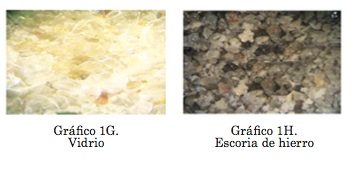Sustitución de la arena en procesos de chorreado en seco para la limpieza de superficies metálicas
Keywords:
abrasive, dreg, fine emissions, surface preparationAbstract
The present article centers its objective on valuing the technical, economic and environmental feasibility of abrasive materials which substitute sand, conventionally used in the processes of surface preparation of the ships that undergo maintenance in the shipyards of the Corporation of Science and technology for the Development of the Naval, Maritime and Riverine Industry –Cotecmar– in Cartagena de Indias, given the negative impact that its use generates in the environment and in the health of the personnel involved in the process. Applying the hierarchic method AHP, the methodology of material selection of the Corporation for the Investigation of Corrosion –CIC– and the cost method developed, a group of abrasive was selected to test its technical-economic competitiveness in the lab as well as in Cotecmar’s shipyards. The final result was a dry-blasting process with copper dreg, and a contingent process that uses dreg of ferronickel. The first material is commercialized as an abrasive, the second isn’t, and both are technically and economically competitive with only a marginal impact on the environment and on the health of the personnel.Downloads
References
Clemco Industries Corp., P. Blackmur & H. Azocar,
“Blastology’’, The Science & Secrets of Successful
Abrasive Air Blasting.
Conn, A. F. & Chahine, G. L. (1976), “Ship Hull Cleaning With Self-Resonating Pulsed Water Jets”, Maryland, Tracor Hydronautics, Inc.
Corporación para la Investigación de la Corrosión y Corporación de Ciencia y Tecnología para el Desarrollo Naval, Marítimo y Fluvial (2005). Proyecto de cofinanciación Colciencias: “Evaluación y Selección de Abrasivos como Sustitutos de la Arena en la Preparación de Superficies
Metálicas en los Astilleros de Cotecmar: Impacto Técnico, Económico y Ambiental”. Piedecuesta, CIC.
Environment Canada (1995), “Best Management Practice (BMPs) for Ship and Boat Building and Repair Industry in British Columbia”, Environmen Canada, International Publication.
National Physical Laboratory & The National Corrosion
Service (1982), “Guides to Good Practice in Corrosion Control Surface Preparation for Coating”, NPL, Ucrania.
Frenzel, L. M. (1996), “The Whole Truth of Standards and Specifications for Water in Surface Preparation”, NACE Corrosion: Article n.º 596, International Publication.
Lever G. (1996), “Hydro Blasting Permits Safe, Cost-Effective Dam Rehabilitation”, Materials Performance (MP), International Publication.
Lou L. D. (2001), “Surface Preparation Standards”, NACE Corrosion: Article n.º 01659, International Publication.
Military Specification, MIL-A-22262B (SH) (1993). “Abrasive Blasting Media Ship Hull Blast Cleaning”, Arlintong, Naval Sea Systems Command.
Munger, C. G. (1986), “Surface Preparation: Corrosion
Prevention by Protective Coatings”, National Association of Corrosion Engineers, 2nd Edition. International Publication.
Peart, J. W. (1987), “Prototype Mineral Abrasive Reclaimed: Shipyard Operation”, U.S. Deptartment of Transportation, NSRP 0272.
Schmidt, R. F. (1997), “Ultrahigh-Pressure Waterjetting
Comes of Age for Surface Preparation - It’s Time to Get the Salts Off the Work”. NACE Corrosion: Article n.º 594, International Publication.
The National Institute for Occupational Safety and Healt (1998), “Particulares not Otherwise Regulated, Respirable”. NIOSH, International Publication.
The Society for Protective Coatings (1982), “SSPC Painting Manual, vol. 2: Surface Preparation Specifications”, SSPC, International Publication.
The Society for Protective Coatings (2000), “SSPC-SP6 Commercial Blast Cleaning’’ SSPC, Pittsburgh.
The Society for Protective Coatings (2000), “SSPC-SP7: Brush-Off Blast Cleaning’’ SSPC, Pittsburgh.
The Society for Protective Coatings (2000), “SSPC-SP10: Near-White Metal Blast Cleaning’’ SSPC, Pittsburgh.
The Society for Protective Coatings (2000) “Abrasive Specification n.°1: Mineral and Slag Abrasives.
SSPCAB1”, SSPC, International Publication.
The Society for Protective Coatings & KTA-Tator, Inc. (1998), “The National Shipbuilding Research Program: User Guide to Selection of Blasting Abrasives”, SSPC, International Publication.
United States of America, State of California Department
of Health Services (s. f.), Average Amounts of California’s 17 Regulated Heavy Metals & the 8 Federal RCRA Heavy Metals.
United States of America, Department of Health and Human Services Centers for Disease Control and Prevention National Institute for Occupational Safety and Health & KTA-Tator, Inc (1999), “Evaluation of Substitute Materials for Silica Sand in Abrasive Blasting”, Pittsburgh, HHS.
Woodson, J. P. (1992), “Blast Cleaning: Wet Abrasive”.
The Society for Protective Coatings: Journal of Protective Coatings and Linings, TIP- 36B, 2nd Edition.
Woodson, J. P. (1992), “Wet Abrasive Blasting: Problems and Solutions”, The Society for Protective Coatings: Journal of Protective Coatings and Linings, TIP- 36B, 2nd Edition.

Downloads
How to Cite
Issue
Section
License
The authors who publish in this Journal certify that:
- The work submitted for publication in The Ship Science and Technology journal, was written by the author, given that its content is the product of his/her direct intellectual contribution.
- All data and references to material already published are duly identified with their respective credits and are included in the bibliographic notes and quotations highlighted as such.
- All materials submitted for publication are completely free of copyrights; consequently, the author accepts responsibility for any lawsuit or claim related with Intellectual Property Rights thereof, Exonerating of responsibility to The Science and Technology for the Development of Naval, Maritime, and Riverine Industry Corporation, COTECMAR.
- In the event that the article is chosen for publication by The Ship Science and Technology journal, the author state that he/she totally transfers reproduction rights of such to The Science and Technology for the Development of Naval, Maritime, and Riverine Industry Corporation, COTECMAR.
- The authors retain the copyright and transfer to COTECMAR the right of publication and reproduction of the work which will be simultaneously subject to the Creative Commons Attribution License (CC -BY) , which allows the license to copy, distribute, display and represent the work and to make derivative works as long as it recognizes and cites the work in the manner specified by the author or licensor.
- For more information about the Creative Commons Attribution License (CC -BY) and his use and scope, please visit the following web page https://creativecommons.org/licenses/by-sa/4.0/legalcode








